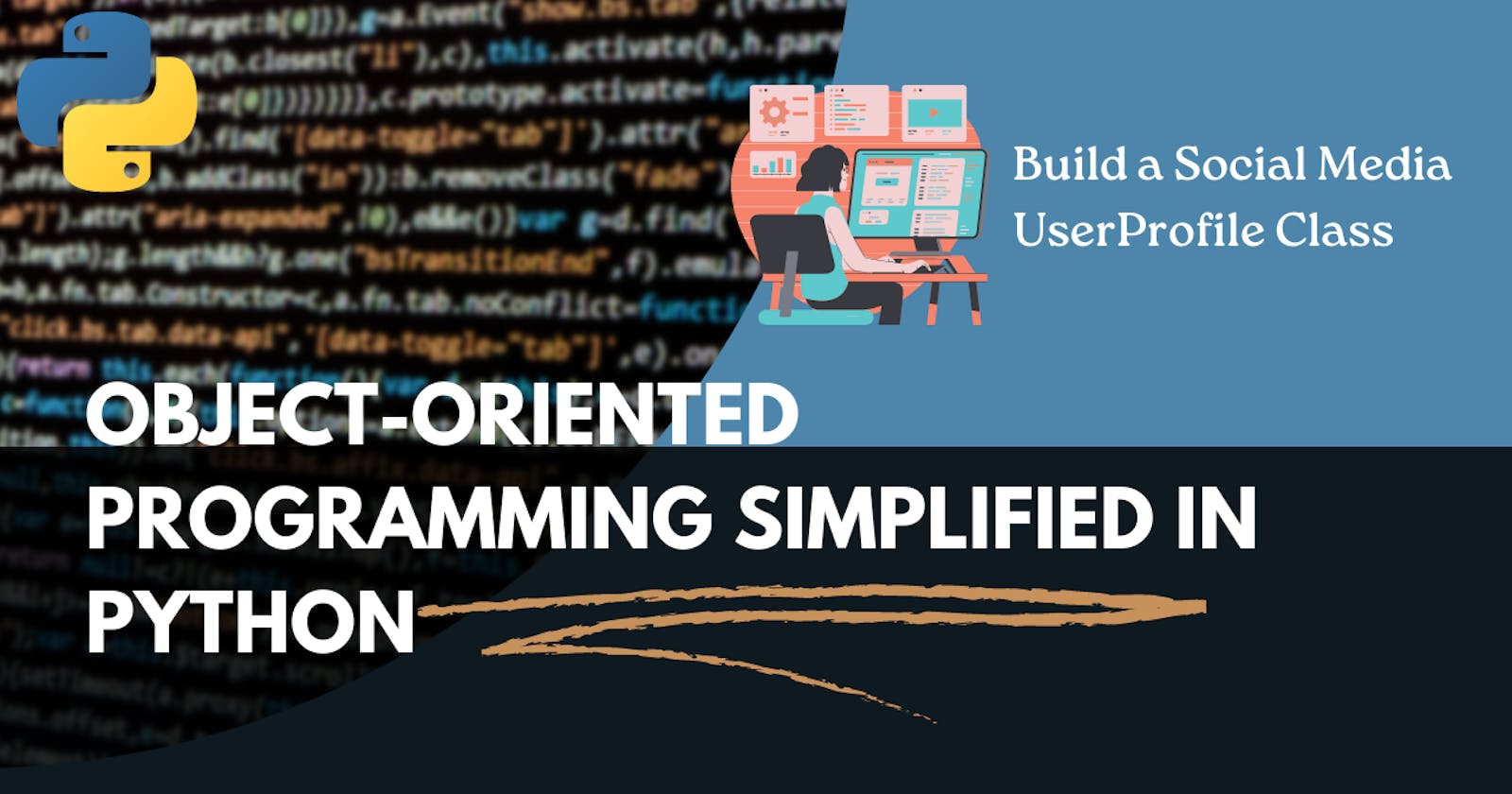Object-Oriented Programming Simplified in Python: Building a Social Media UserProfile Class
OOP In Python
Object-Oriented Programming (OOP) is a powerful paradigm used in many programming languages, including Python. It allows us to model real-world entities as objects, organizing data and functionality in a structured and easy-to-maintain manner. In this article, we’ll delve into the basics of OOP in Python and build a simplified UserProfile class for a social media platform.
Prerequisites
To get the most out of this article and follow along with the examples, readers should have the following prerequisites:
Basic Python Knowledge: Familiarity with Python syntax, data types, variables, functions, and control flow is essential. If you’re new to Python, consider completing a beginner’s Python course or tutorial.
Understanding Functions and Classes: A basic understanding of functions and how to define them in Python will be helpful. Additionally, some familiarity with the concept of classes will make it easier to grasp OOP principles.
Text Editor or IDE: Ensure you have a text editor or an Integrated Development Environment (IDE) set up on your computer. Popular choices include Visual Studio Code, PyCharm, or Jupyter Notebooks.
With these prerequisites in place, you’ll be ready to explore the world of OOP in Python and build your UserProfile class for the social media platform.
Before we dive into the exciting world of Object-Oriented Programming in Python, let’s take a moment to understand the foundation of this powerful paradigm. Object-Oriented Programming (OOP) is a programming approach that allows us to model real-world entities as objects, imbuing our code with structure, reusability, and simplicity.
Imagine you have a box of colorful building blocks. Each block has a unique shape and color. Now, think of a class as a blueprint for building something amazing with these blocks. It tells you how to put the blocks together and what they should look like.
In the same way, a class in programming is like a blueprint that defines how to create objects. Objects are like the building blocks you make using the blueprint. Each object is a real thing, just like you can build a car, a house, or a robot using those colorful blocks.
1. Understanding Classes and Objects
At the heart of OOP is the concept of classes and objects. Think of a class as a blueprint or template that defines the structure and behavior of objects. Objects, on the other hand, are instances created from classes, representing individual entities with specific attributes and methods. In Python, we create a class using the class keyword.
2. Defining the UserProfile Class:
For our social media platform, let’s define the UserProfile class. Each UserProfile object will have attributes like username, bio, and followers count. To make things simple, we’ll use basic data types like strings and integers.
class UserProfile:
def __init__(self, username, bio, followers_count):
self.username = username
self.bio = bio
self.followers_count = followers_count
def post_update(self, content):
# Method to post an update
pass
def follow_user(self, user_to_follow):
# Method to follow another user
pass
def send_message(self, recipient, message):
# Method to send a direct message to another user
pass
3. Creating UserProfile Objects
Once we have our class definition, we can create individual UserProfile objects, each representing a unique user on our social media platform.
# Creating UserProfile objects
user1 = UserProfile("john_doe", "I love coding!", 1000)
user2 = UserProfile("jane_smith", "Python enthusiast", 1500)
4. Accessing Object Attributes
We can access the attributes of an object using dot notation.
print(user1.username) # Output: "john_doe"
print(user2.bio) # Output: "Python enthusiast"
5. Object Methods
Our UserProfile class has methods like post_update(), follow_user(), and send_message(). These methods allow users to interact with each other on the platform.
user1.post_update("Just finished a coding project. #Excited")
user1.follow_user(user2)
user2.send_message(user1, "Hi, let's collaborate on a project!")
6. Core OOP Concepts
Let’s now emphasize some core OOP concepts present in our UserProfile class.
a. Encapsulation: In our UserProfile class, we’ve encapsulated the username, bio, and followers_count attributes along with the post_update(), follow_user(), and send_message() methods. This encapsulation hides the implementation details from the outside world, allowing users to interact with objects without needing to understand the internal complexities.
b. Inheritance: Inheritance allows us to create new classes based on existing classes. This concept promotes code reuse and extensibility. For example, we could create a new class, say “VerifiedUserProfile,” that inherits from UserProfile and adds extra functionality for verified accounts.
c. Polymorphism: Polymorphism enables different objects to be treated as instances of a common base class. In our case, we could have multiple classes that inherit from UserProfile, each with its own version of the post_update() method. However, when we interact with these objects, we can call the post_update() method uniformly without worrying about the underlying class.
Conclusion
Object-Oriented Programming simplifies code organization and encourages a more intuitive way of thinking about data and functionality. In Python, we can create classes to represent real-world entities like user profiles on a social media platform. By leveraging classes and objects, along with core OOP concepts like encapsulation, inheritance, and polymorphism, we can build powerful and scalable applications.
In this article, we explored the basics of OOP in Python and built a simplified UserProfile class with attributes and methods relevant to our social media platform. With this newfound knowledge, you can further explore OOP concepts to take your Python programming skills to the next level.
Remember, practice makes perfect! So, don’t hesitate to create your classes and experiment with OOP in Python to solidify your understanding. Happy coding!

